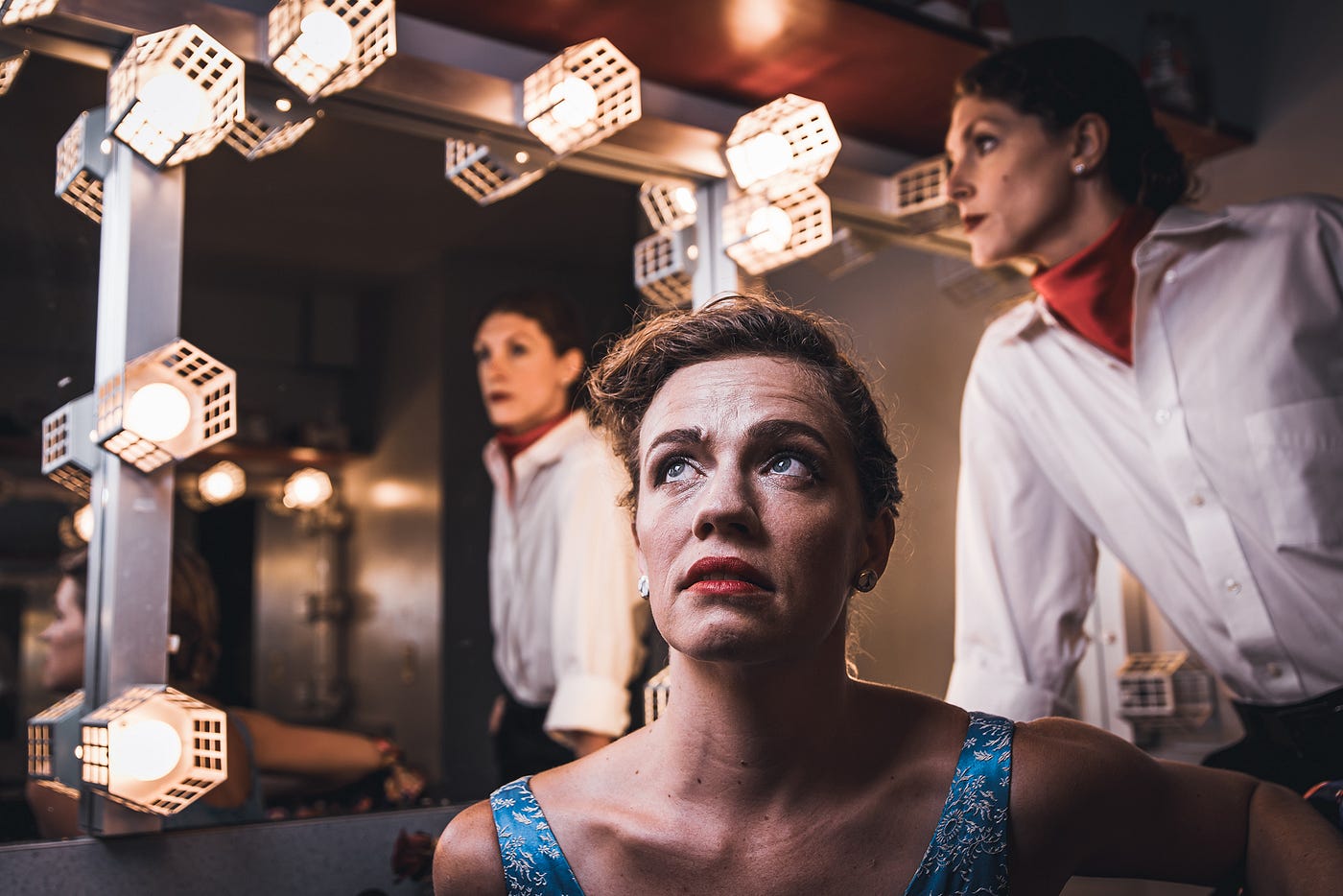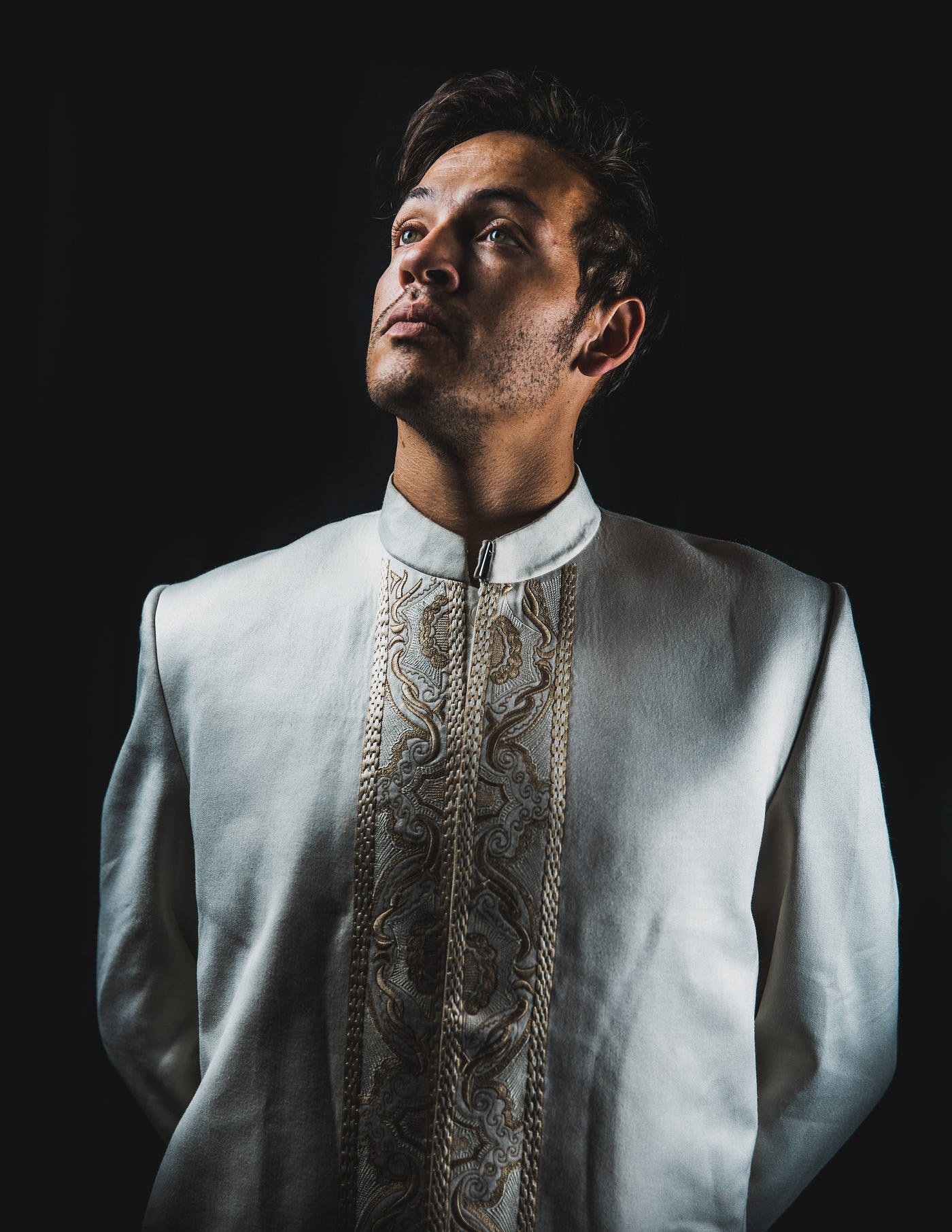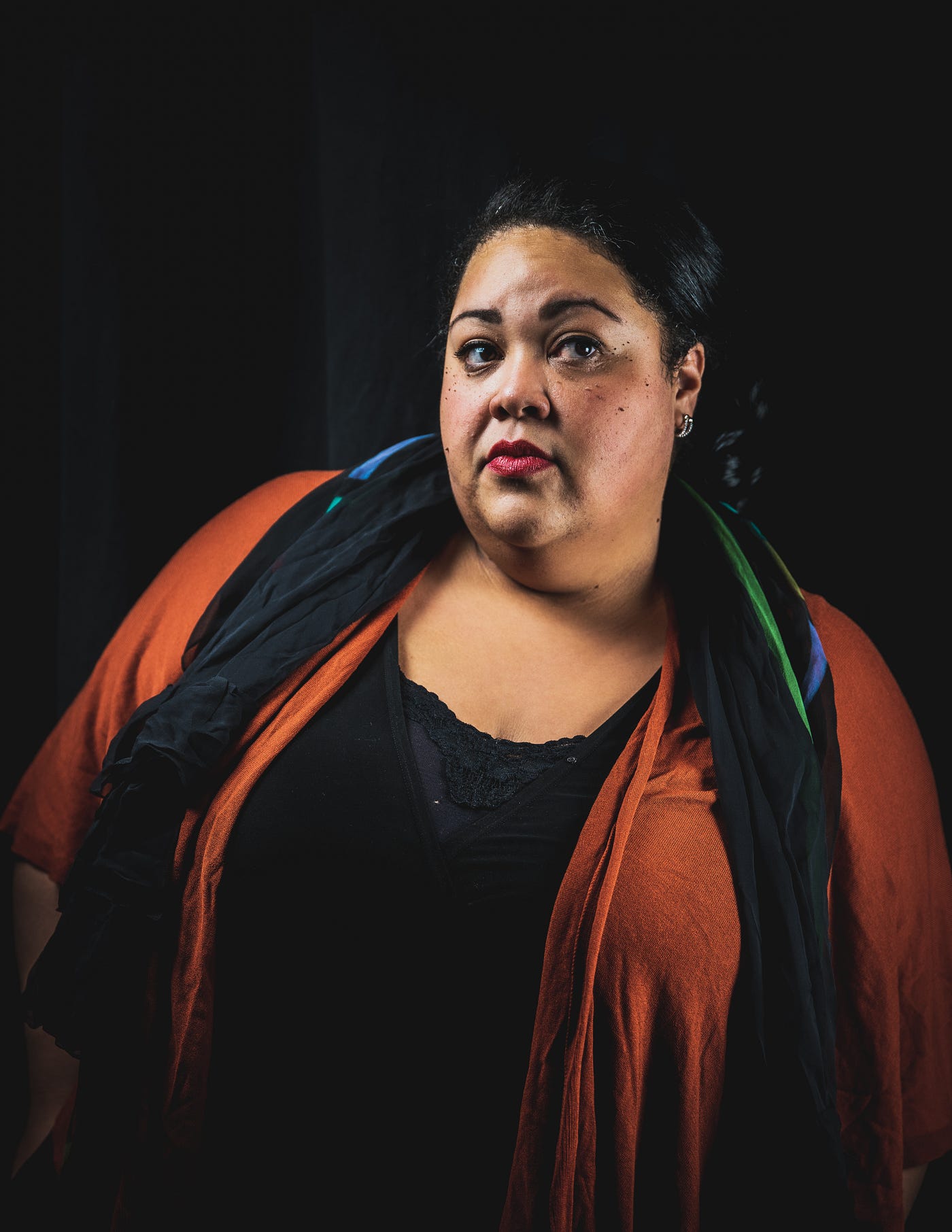Control Group Productions Creates an ‘Avant Haunt’ with ‘Cutting Room Floor’ (Interview)
Denver Correspondent Danielle Look speaks to the team about the new show


Cutting Room Floor, Control Group Productions’ newest show, has been in the works for more than a year.
It all started with last fall’s outdoor processional, Watching Night Falling, in Aurora. Helen Murray, Executive Director of the Aurora Fox Arts Center, was new in town and trying to get a beat on the local theater scene. She attended the show and immediately knew she wanted to work with Control Group Productions. The Fox had some dark weeks where they were transitioning from one show to the next and offered them a cabaret contract to co-present a work with them.
Given the dates offered and the building’s interesting history, they knew they wanted to tie in with the spooky season. As a haunted house scare actor, I was immediately interested to know more about the show they’re advertising as a “haunt-inspired immersive performance.” You should know that while Cutting Room Floor has elements of a haunted house, it is definitely not a haunted house.
Patrick Mueller, Control Group Productions’ Founder & Artistic Director, makes it clear he has no visions or ambitions for creating any kind of typical, commercial haunted house experience, or anything even remotely close to that. Cautiously using the term avant haunt to describe what they’ve created, he likes to think of Cutting Room Floor as a “hijacked haunted house.”
The show is “borrowing happily” from the haunt world and incorporating lots of familiar tropes, but they’re also being intentional about not poking fun at the art, especially as they appropriate content as well as structure.
“Scary is not our primary goal,” Mueller explains. “It incorporates the weird, the eerie, the supernatural — but it’s more than just looking to affiliate with the time of year that the show is running.”
Associate Director, Composer, and Sound Designer Nicholas Caputo concurs. Like Mueller, he’s not interested in creating horror, but he is into dealing with emotional content that is unsettling and scary. This ultimately led the creative team to explore the idea of regret, which plays a key role in this performance. Unlike a jump scare in a haunted house, regret isn’t in-your-face, but it’s omnipresence is palpable.

Caputo explains, “It’s just this idea and sensation that emerges, which we hope will connect with all participants in some way — whether it’s an actual regret from the past, or the fear of eventually regretting a decision you’re faced with making now or in the future.”
Christine Woods, Associate Director & Experience Designer, puts it another way. “Think of shifting the hauntedness from being a haunted house to being inhabited by haunted people.”
The creative team is also taking a very site-specific approach to presenting this show at the Aurora Fox Arts Center and incorporating its rich history into the story. The building was originally a movie house, but eventually morphed into a civic center that hosted all kinds of public engagements, including Miss Aurora pageants. It then turned into a seedy dollar theater before tragedy struck and it burnt half-way down. Eventually it was bought by the city and rebuilt to be used by future generations.
In addition to extensive library research, the creative team also spent time gathering first person stories from locals who played a crucial role in the building’s history and development. Alice Lee Main, for example, was a city employee around the time that the theater burned down. She was in touch with the local arts scene and helped convince the city to buy the building and renovate it as a live arts center.
Using the entire theater for the performance (not just the stage and the seats in front of it) meant that they’d also need to weave the story around steadfast elements of theater life: prosceniums, dressing rooms, ghost lights and more. Caputo admits that it’s “a funny high art in this kind of work,” meaning they intentionally include inside jokes for people who are intimately familiar with certain elements of the show — whether it be the location or the subject matter.

All this talk about decades past makes me wonder if Cutting Room Floor is also an experiment in time travel, or if it takes place concretely in a specific period of time. The directors all concur that we, the audience members, are in present day entering the space, but the characters we’ll eventually meet are not.
Get Danielle Riha’s stories in your inbox
Join Medium for free to get updates from this writer.
SubscribeSubscribe
Woods elaborates, “The characters are mid-80’s and they’re working on a play that’s depicting a film from the 40’s. And the film from the 40’s, the spirits that have been left over are starting to over-take and possess the people who are doing the play in the 80’s. And we are viewing it from 2019.”
It starts to sound complicated and perhaps a bit much to follow. I wonder aloud if there is a narrative or story to follow.
She continues, “There is narrative there, but because of the nature of the way we run shows, it’s not a traditional narrative arc. Our audiences typically begin together, then we ‘egg beater’ them where some people go into an open world for a while, while others are seeing various scenes that are happening simultaneously.”
Bailey Harper, Associate Director & Director of Marketing, chimes in to add that they learned a lot about clockwork (the literal moving of the people and the actors) in Aggregate Immateriality, then took those learnings and “exploded” them for Cutting Room Floor.
“It’s much more intricate than what we did in Aggregate.”
Woods agrees, then continues, “Sixteen audience groups will have the same general track, but within each of those, there are a couple of things that only one person in each track will see. But those aren’t necessary to understand the entire arc. It wouldn’t work to egg-beater if you had to see things in chronological order, so all the vignettes add up to a narrative, but not in a traditional narrative structure.”
Mueller adds, “If you are fixated purely on finding meaning through the story, you’re missing most of what happens over the show.”

This is because a Control Group show is meant to be an open-ended experience that leaves a lot of room for personal reflection. There isn’t ever a right or wrong interpretation of their shows; everyone takes home a different conclusion. This is intentional and by design.
“Our company was founded as a dance theater company that was making work that was rich, but rarefied,” says a humbled Mueller. “It left many gaps that were uncomfortably large for audience members who weren’t well-versed in what contemporary dance does and what avant-garde art in general does.
“We’ve been stepping towards this dual-layer approach that has concrete tethers for anybody who needs them, but don’t worry — we’re not just stuck in that space. There’s also these highfalutin concepts that are going on that we’re hoping we’re addressing through those concrete tethers in a way that is engageable and personable and isn’t alienating.”
With a limited run ahead for the season, Cutting Room Floor will be a test of just how well that dual-layer approach works on Aurora’s audiences.
Cutting Room Floor runs through October 30th at Aurora Fox Arts Center in Aurora, Colorado. Tickets are $25 — 32.
NoPro is a labor of love made possible by our generous Patreon backers. Join them today!
In addition to the No Proscenium web site, our podcast, and our newsletters, you can find NoPro on Twitter, Facebook, YouTube, Instagram, in the Facebook community Everything Immersive, and on our Slack forum.
Office facilities provided by Thymele Arts, in Los Angeles, CA.